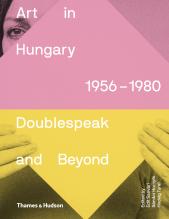Supported by the Hungarian Prime Minister's Office
2014–2018
Project leader
Edit Sasvári
Research group
Edit András
Flóra Barkóczi
Géza Boros
Lóránt Bódi
Gábor Dobó
Dávid Fehér
Maja and Reuben Fowkes
Sándor Hornyik
Emese Kürti
Mária Madár
József Mélyi
Péter Molnos
Júlia Perczel
Merse Pál Szeredi
Katalin Székely
Dániel Véri
Between 2014 and 2018, Kassák Museum director Edit Sasvári lead a group of mainly young researchers in the Museum. The group’s objective is to make a comprehensive study of Hungarian visual art in the 1960s and 1970s. We propose a new conception that focuses on the regional context, replacing both the isolated nationalist view and the centre-periphery dichotomy. The fundamental determinant of this context is the delicate position occupied by the countries of the region, squeezed between the two superpowers. This is the starting point for an attempt to rethink the present constellation. The main virtue asserted for the model is that it gives expression to the special cultural patterns of the region instead of invoking the ossified cold-war narrative of superpower confrontation. The key concept here is the “doublespeak” engendered in all of the countries in the region by the vice-like pressure of the two superpowers, eclipsing geographic, linguistic and political differences.
Events
14 February 2020
Publications


